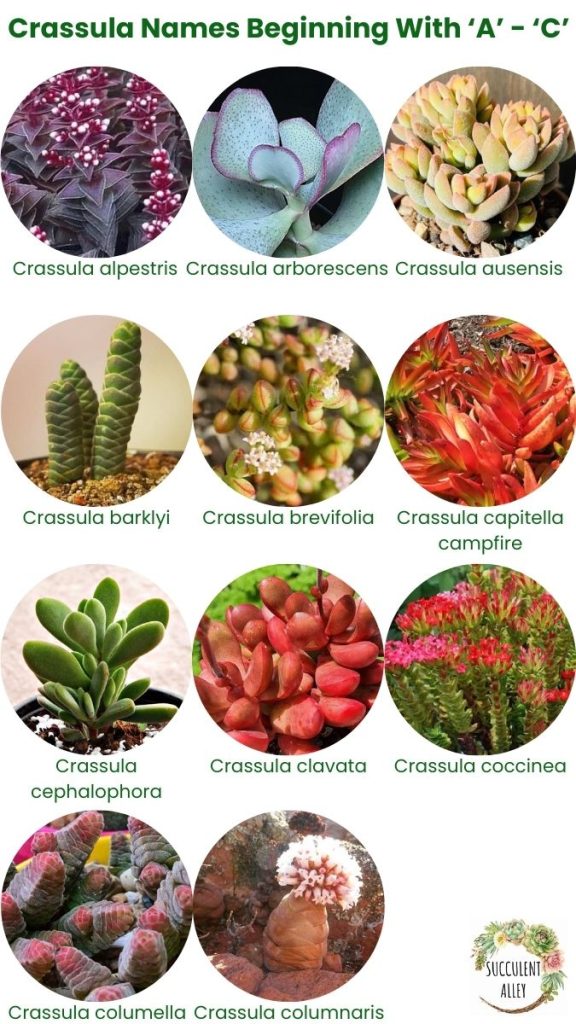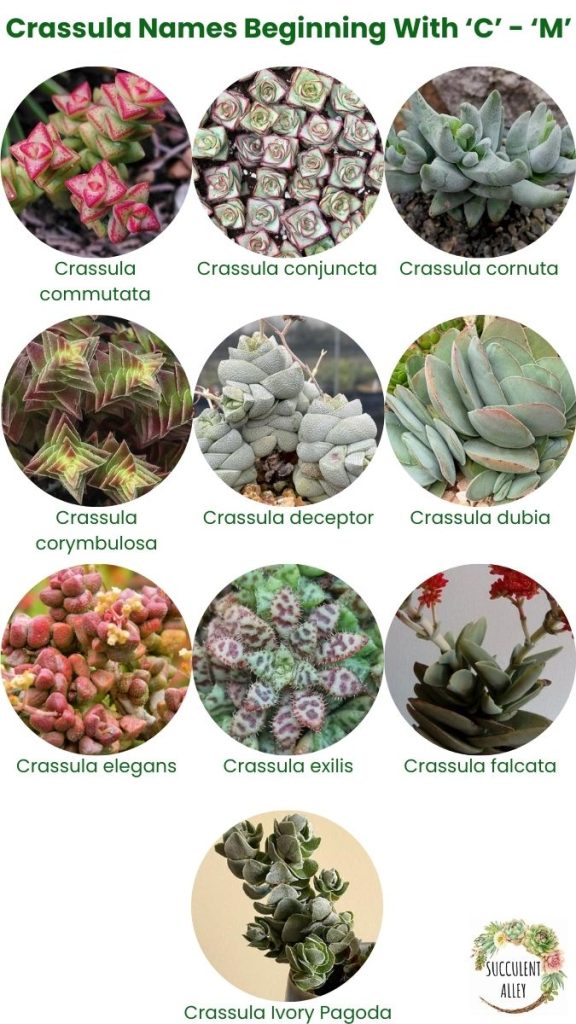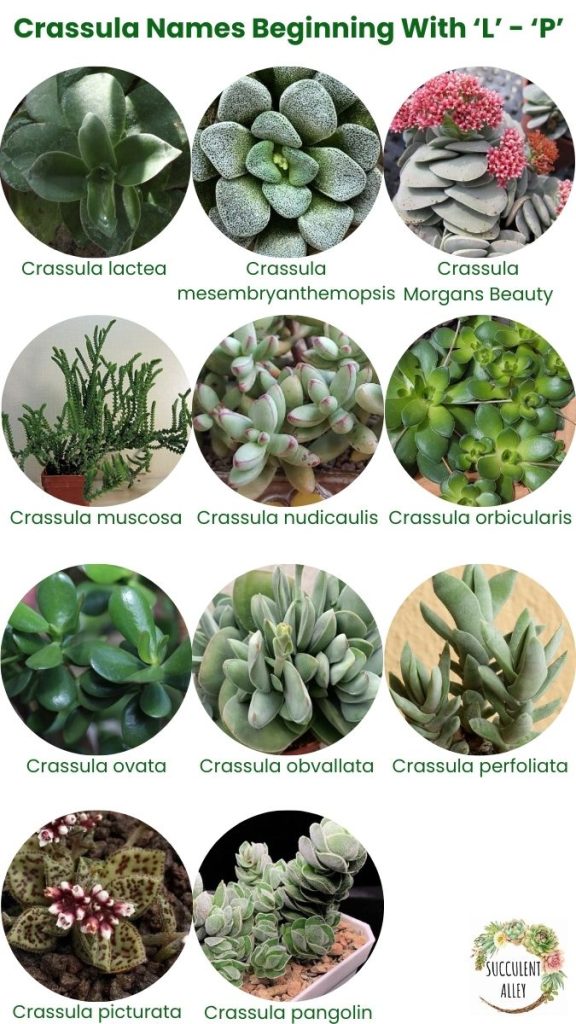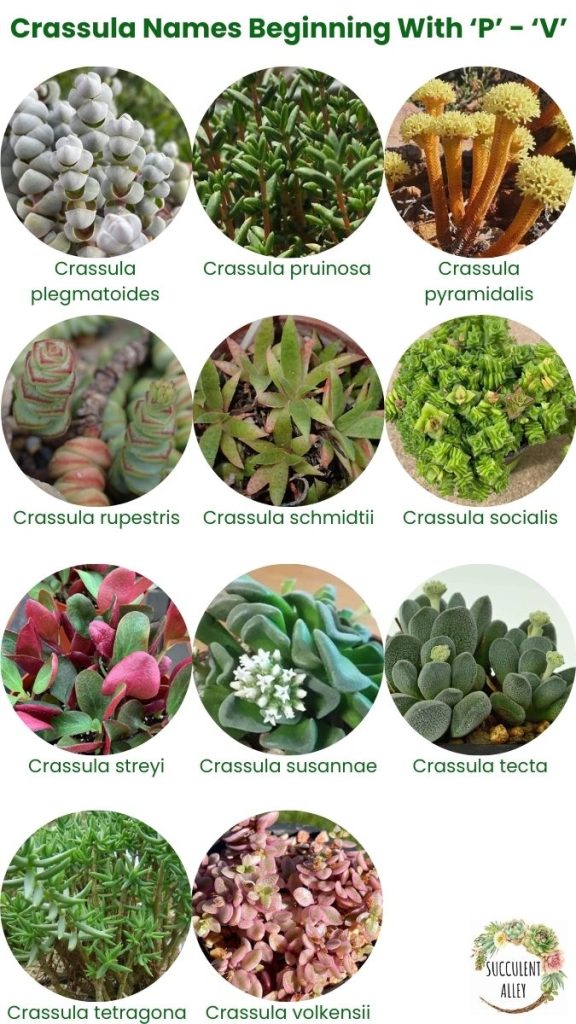40+ Crassula Lower Classifications With Pictures
Crassula (thick leaf) is the name for a species-rich plant genus from the family of thick leaf plants (Crassulaceae). The genus Crassula includes succulent plants in different shapes and sizes. This article looks into the crassula lower classifications and their general care.
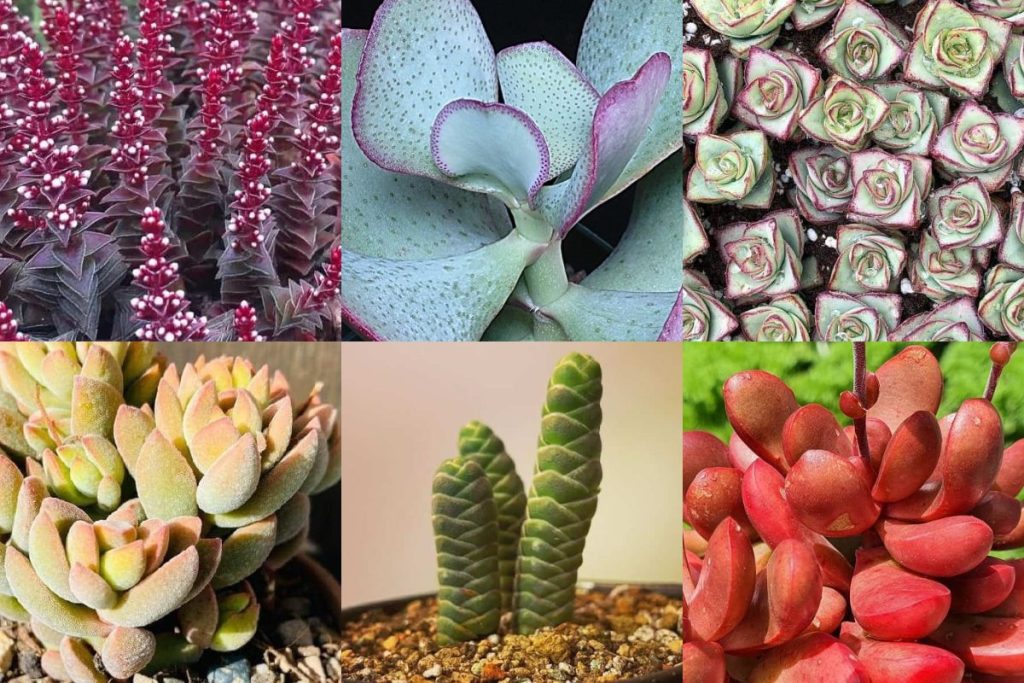
Crassula Identification Charts
This varied genus contains about 300 species of one-year-old or perennial, evergreen succulents, which are mostly shrubs. A few crassula varieties are common all over the world, but the majority are confined to southern Africa.
They vary in appearance from small and flat-growing or perennial plants to upright 3.5 m tall, upright shrubs. A consistent feature for all types of crassula is the counter-resistant leaves, whose leaf bases sometimes touch around the stem. The rarely conspicuous flowers stand in terminal grapes or risps.
Related Post:
1,000 Types of Succulents With Pictures
Crassula Lower Classifications
Crassula alpestris
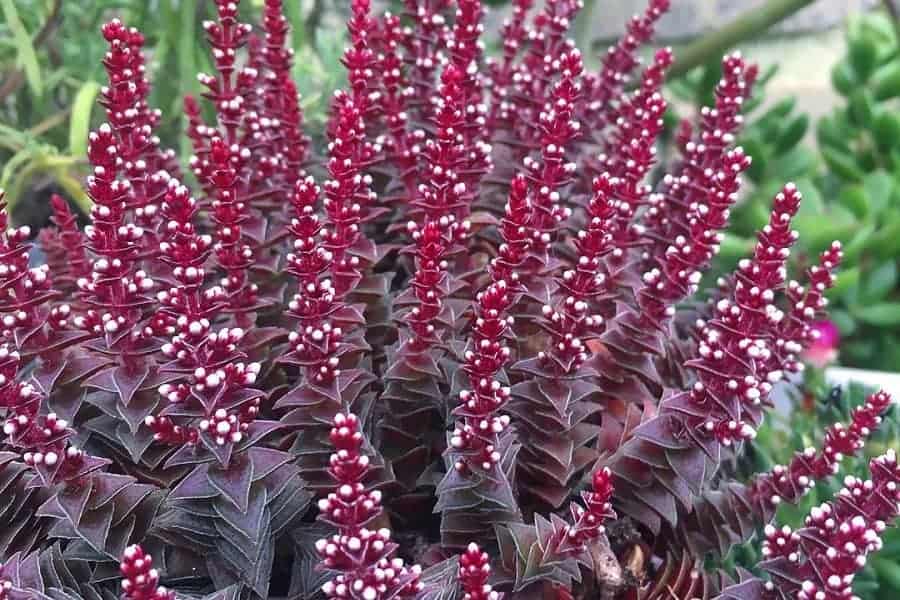
Also called the sand-coated crassula, the Crassula alpestris is a flowering plant species that belongs to the Crassulaceae family. A native to South Africa, the dwarf perennial succulent is rather short-lived.
Crassula arborescens (Silver Jade Plant)
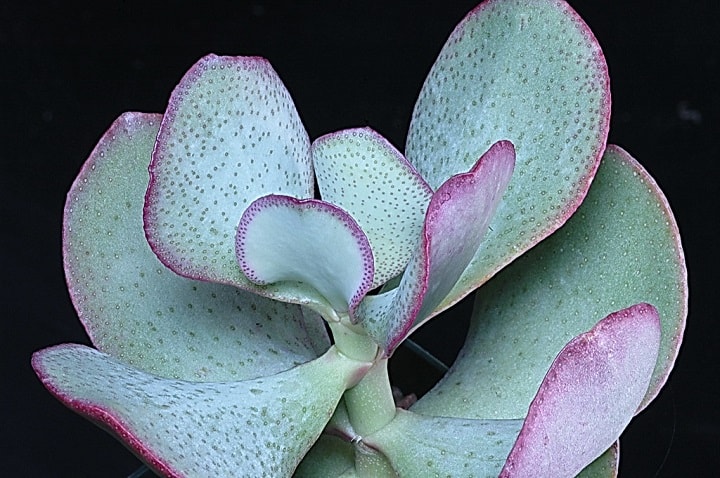
The Crassula arborescens is a type of plant that is commonly found in South Africa and some parts of East Africa. It can grow to be taller than 10 feet and just as wide, although when grown in gardens, it usually reaches a height of 24-35 inches.
This plant has many branches and thick, brown stems. Its leaves are almost round, about 1.5 inches in size, and have a blue-gray color with small dark green spots. They also have a red edge. In the fall and winter seasons, the plant produces clusters of small, light pink flowers that are shaped like stars.
The Crassula arborescens is an easy-to-care-for plant that can be grown in a sunny location. However, it is important to note that sometimes people mistakenly refer to another plant, the Crassula ovata (also known as Jade Plant), as Crassula arborescens. The leaves of the true Crassula arborescens have a waxy feel and a bluish color with a red rim when grown in sunny areas. Be sure to trim the plant regularly so that the branches don’t become too heavy.
Crassula ausensis
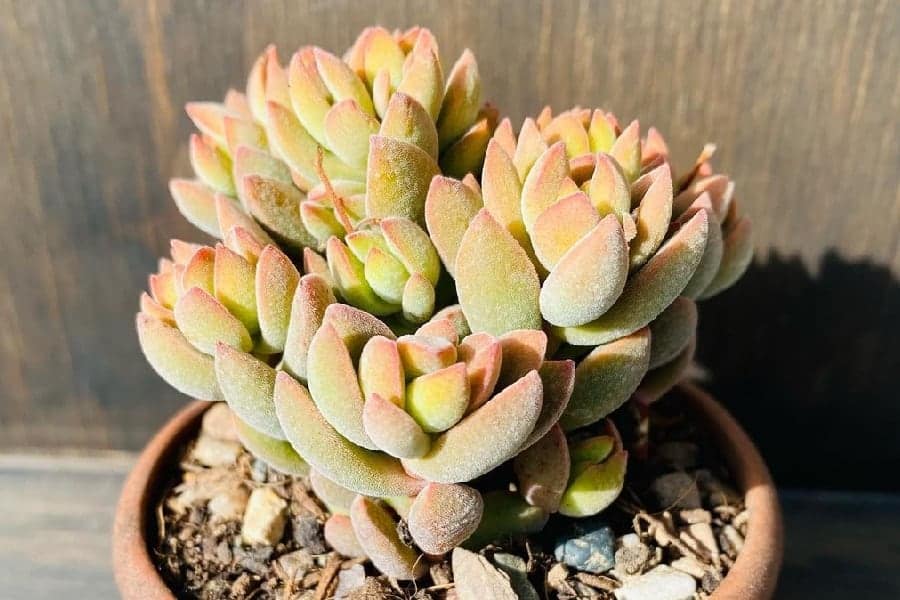
The Crassula ausensis is native to Namibia. These plants are quite short and remain close to the ground, although the flower stalk can grow a bit taller than the usual height, measuring up to 3 inches.
Crassula barklyi
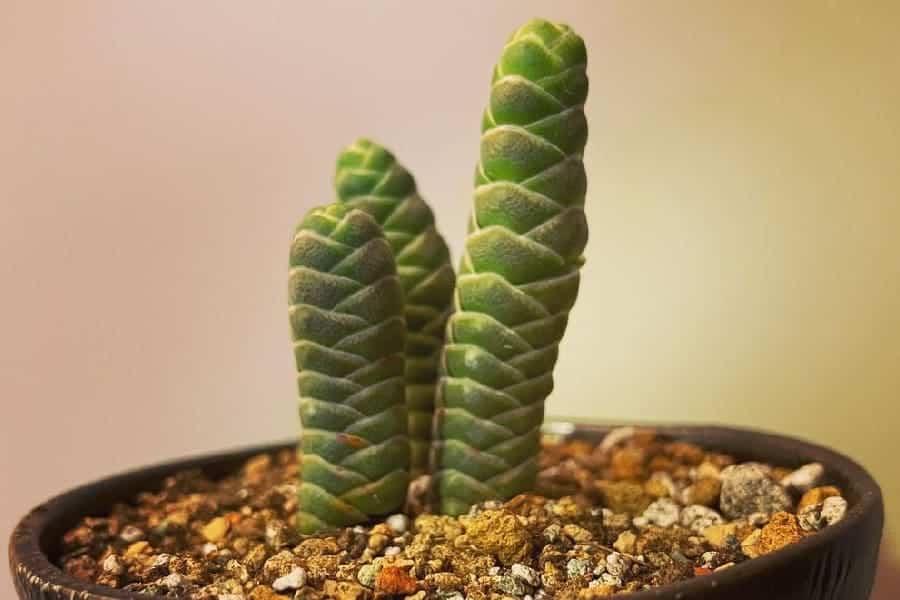
The Crassula barklyi plant is also called the Rattlesnake Tail plant and is native to South Africa. This plant has unique stems that are all covered by leaves that tend to overlay each other, making each stem appear like a ridged cylinder.
Crassula brevifolia
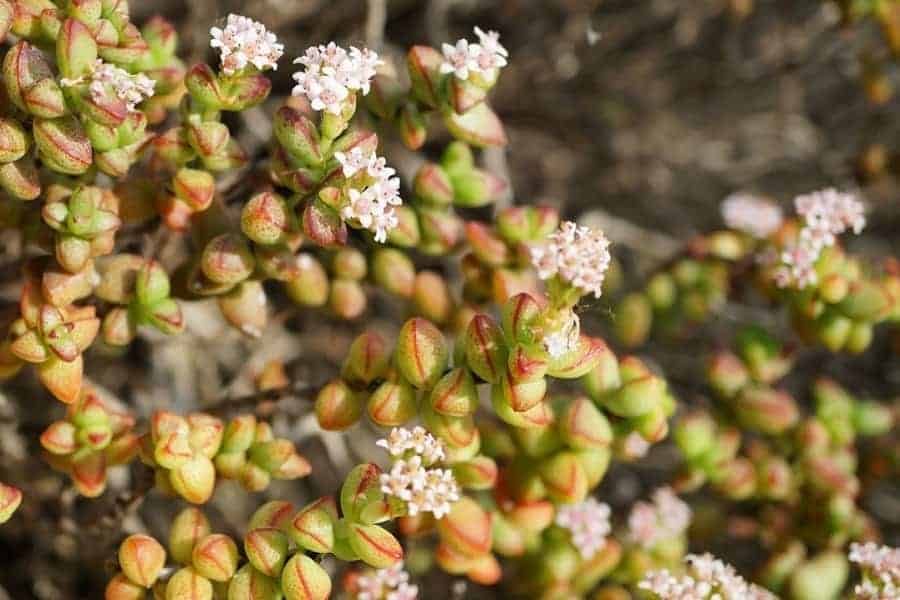
The Crassula brevifolia is a small succulent plant that bears multiple branches. It grows in the form of a shrub and each branch further produces wide, thick and triangular-shaped leaves. They are quite small in size.
Crassula capitella

Crassula capitella is a subshrub that originates from South Africa. It has different varieties, and some scientists used to think they were separate species until recently. The plant has long, narrow leaves that have red dots on them and are arranged in a rosette shape. In the middle of the rosette, a thin flower stalk can grow up to 18 inches tall and produce light pink flowers during the spring and summer seasons. One popular cultivated type of this plant is called ‘Campfire’ because its leaves are red in color, resembling flickering flames.
Crassula cephalophora
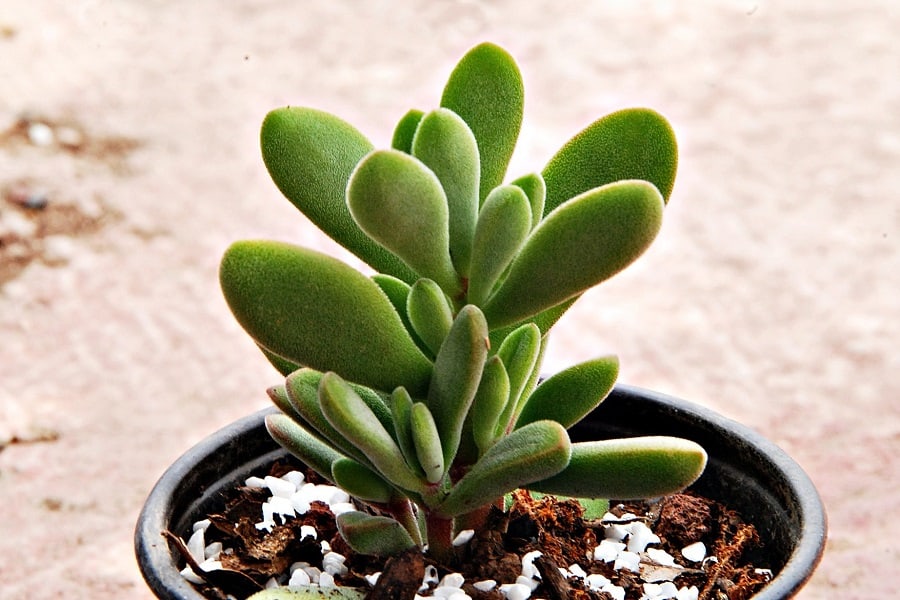
Crassula cephalophora is a small succulent shrub with thick paddle-shaped leaves. The leaves are light or lime green in color and covered in small white hairs, which gives them a silvery sheen.
Crassula clavata
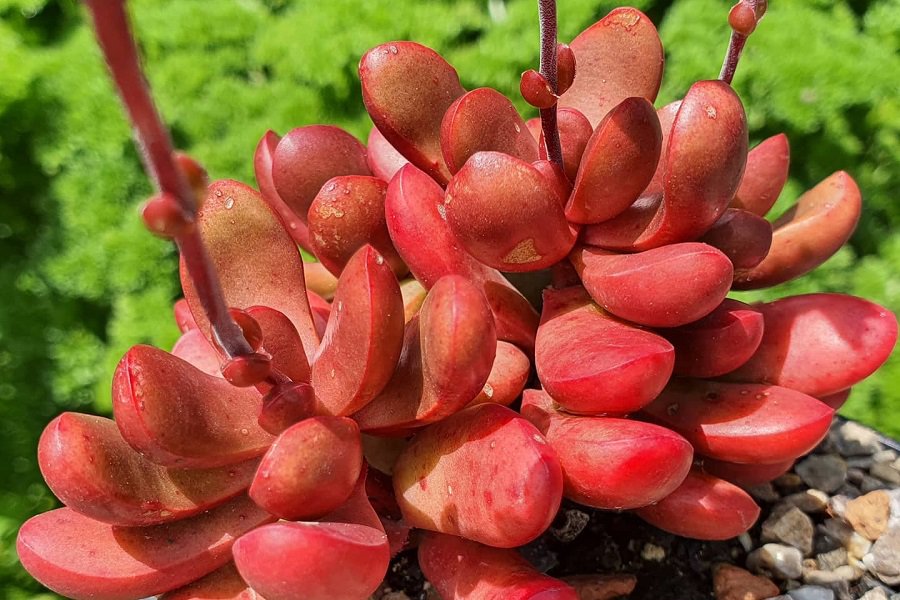
Crassula clavata is a small yet striking succulent with deep red leaves. The leaves are densely packed in mounds and the plant only grows 4 inches tall. The leaves are quite chunky and shaped like clubs.
Crassula coccinea (Red Crassula)
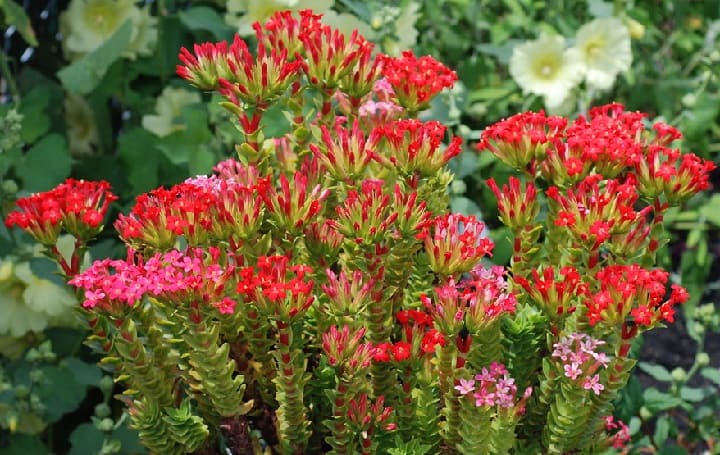
Crassula coccinea is a type of perennial plant that comes from the mountains in the South African Cape Province. It can reach a height of about 24 inches and is known for its beautiful flowers. The plant has multiple branches that spread out from its base. Its leaves are short and green, and sometimes they have a hint of red color.
During the late summer and autumn seasons, Crassula coccinea produces many dark red flowers. These flowers are shaped like tubes and are clustered together in round groups called panicles. This plant thrives in areas with lots of sunlight and prefers warm and dry spots in a rock garden. When the winter season approaches, it is recommended to trim the branches of the plant back to its base.
Crassula columella
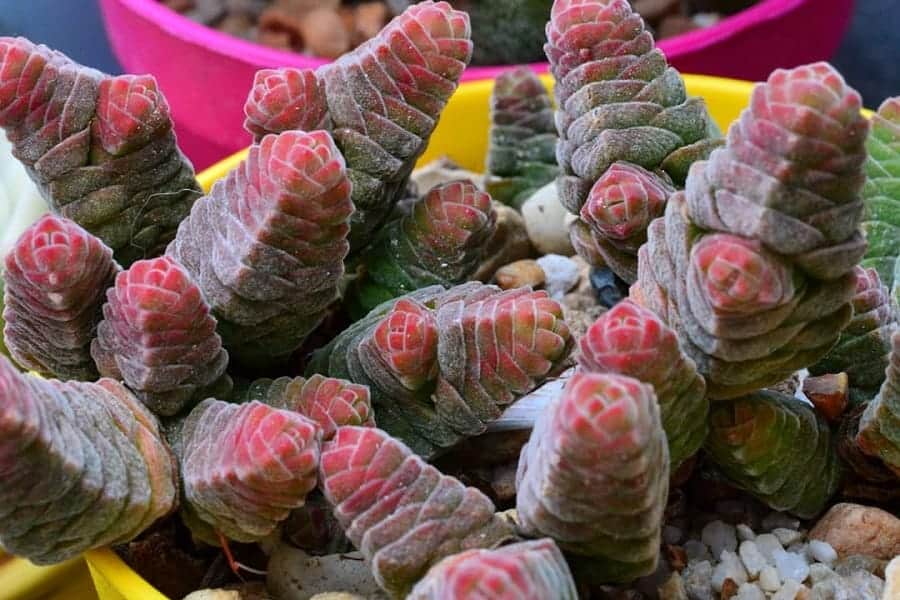
Crassula columella is a succulent with short stems fully covered with densely packed leaves. The leaves are very small and grow in a column in all 4 directions. They are velvety to the touch and reach a height of 6 inches.
Crassula columnaris
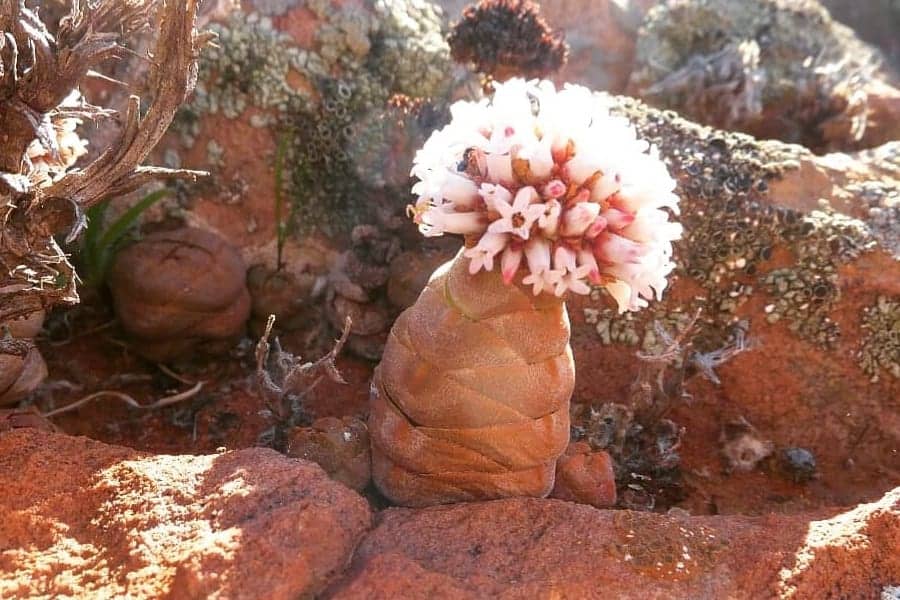
Crassula columnaris or Upright Crassula is also known as a khaki button or scent bottle. It originated in Namibia and South Africa.
Crassula commutata
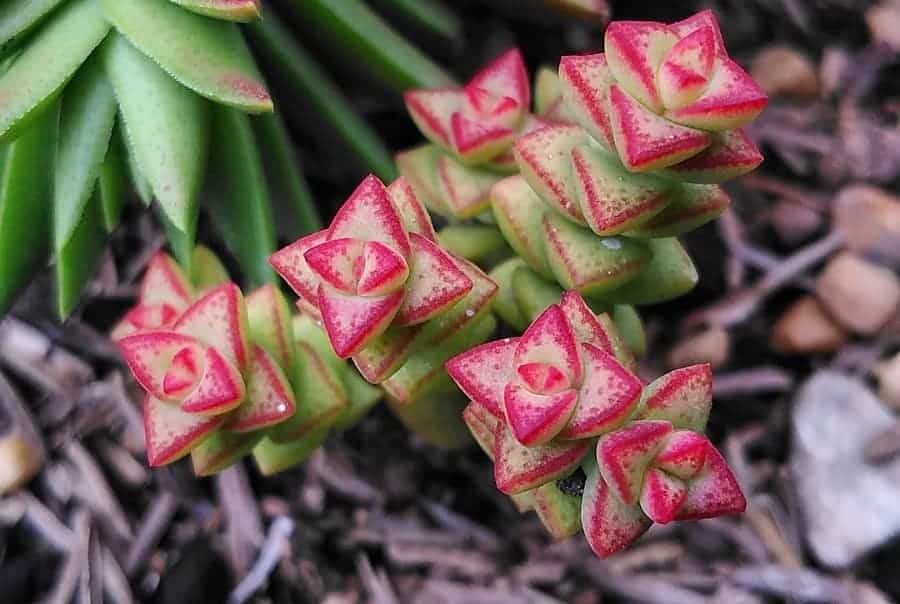
Crassula commutata is a miniature succulent with slim stems that grow many branches. The stem and branches are completely covered with light green triangular leaves. The leaves are reddish at the edges and can turn yellow during the summer.
Crassula conjuncta
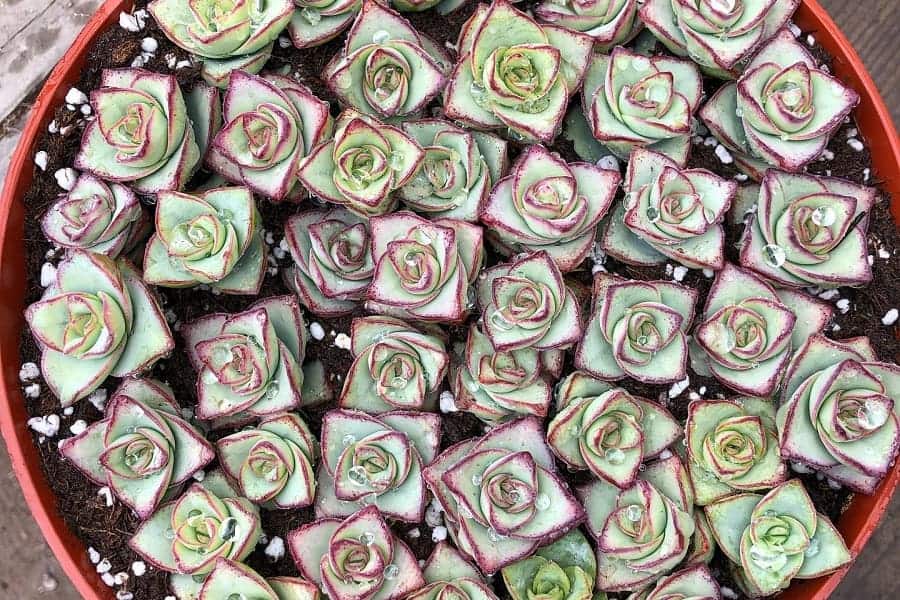
Crassula conjuncta is a small succulent that mostly grows vertically. It is native to South Africa and grows in a rocky medium. It usually has many branches densely packed with small triangular leaves.
Crassula cornuta
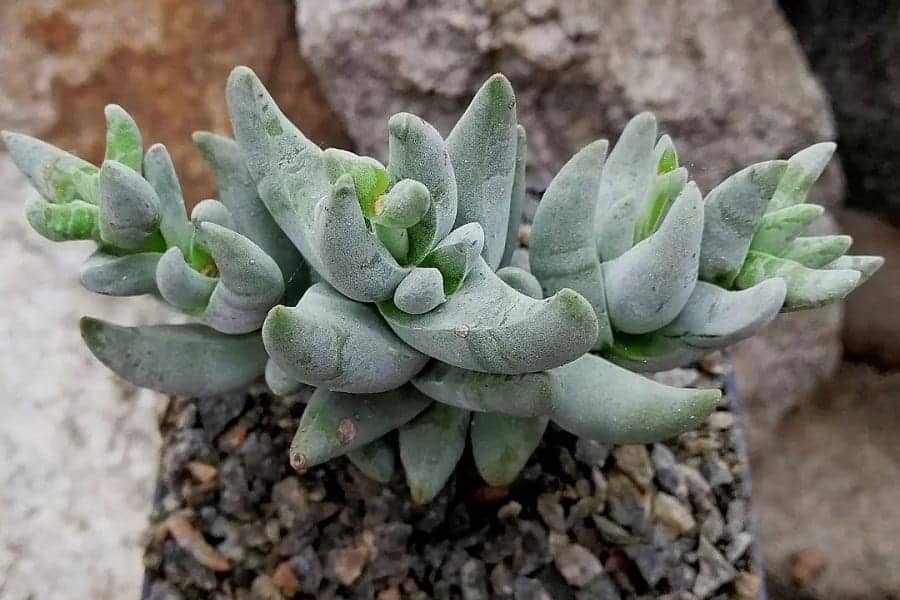
Crassula cornuta is a small-sized succulent growing in tightly packed stems. The leaves are triangular and very thick. They are densely packed along the stems, giving the stem a columnar appearance.
Crassula corymbulosa
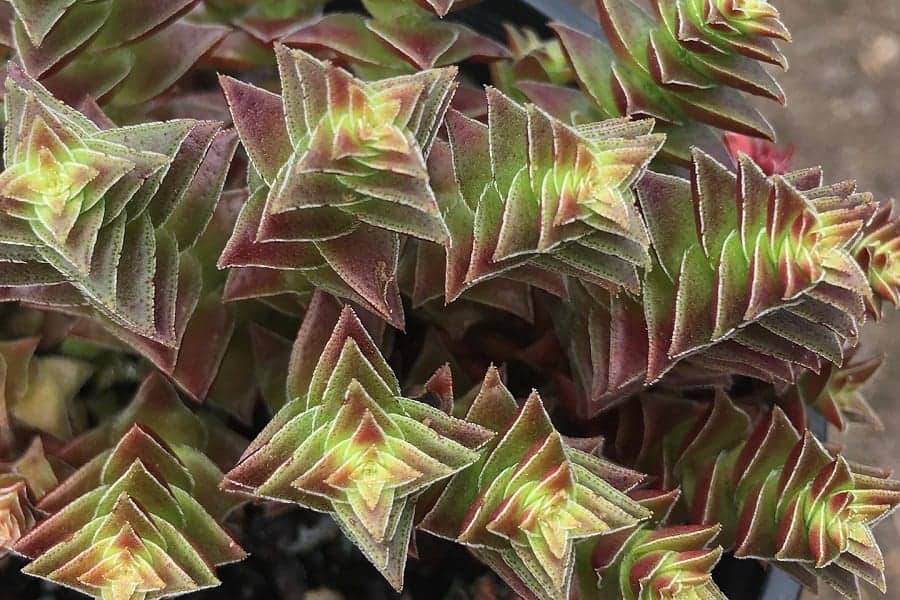
Crassula corymbulosa is a distinctive succulent originating in South Africa and Namibia. The stems reach a length of 8 inches and are stacked with triangular leaves arranged in a pagoda structure.
Varieties of Crassula corymbulosa:
Crassula Sharks Tooth
Crassula deceptor
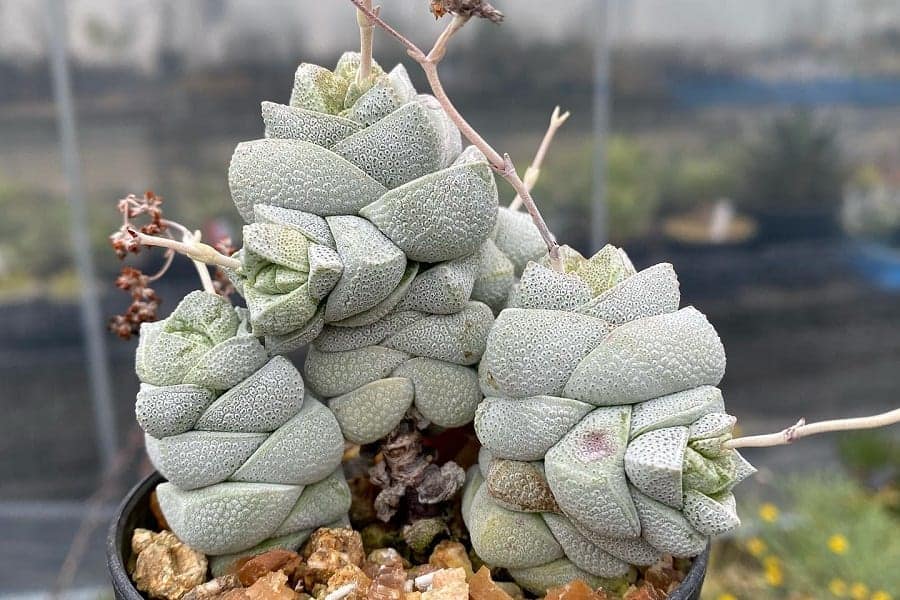
Crassula deceptor is a dwarf succulent originating in Namibia and South Africa. It has thick, fleshy leaves packed in an overlapping manner in the stem and branches. It grows to a height of 6 inches. The stems are quite short and branch out at the base.
Crassula dubia
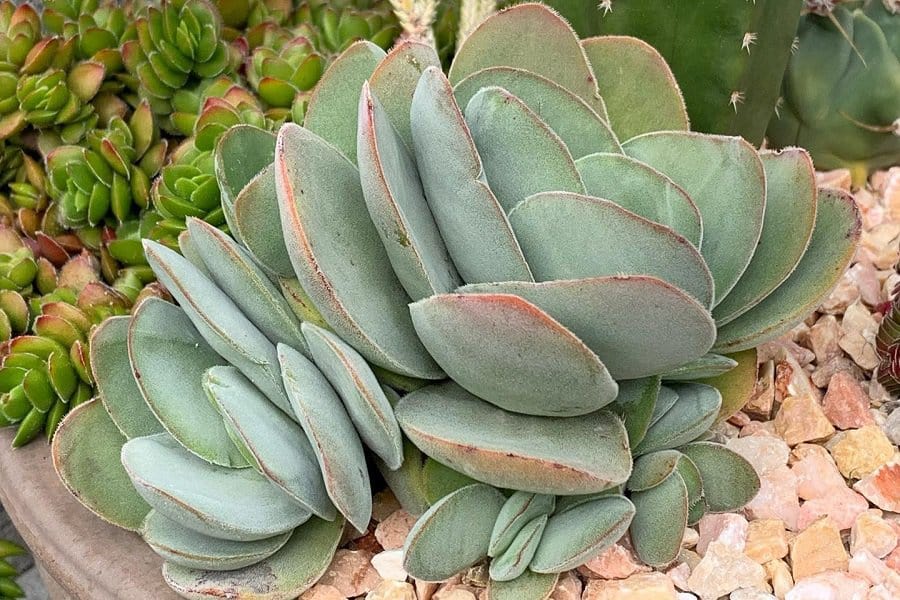
Crassula dubia originated in South Africa and is also called paddle succulent. This is due to its flat, paddle-shaped leaves.
Crassula elegans
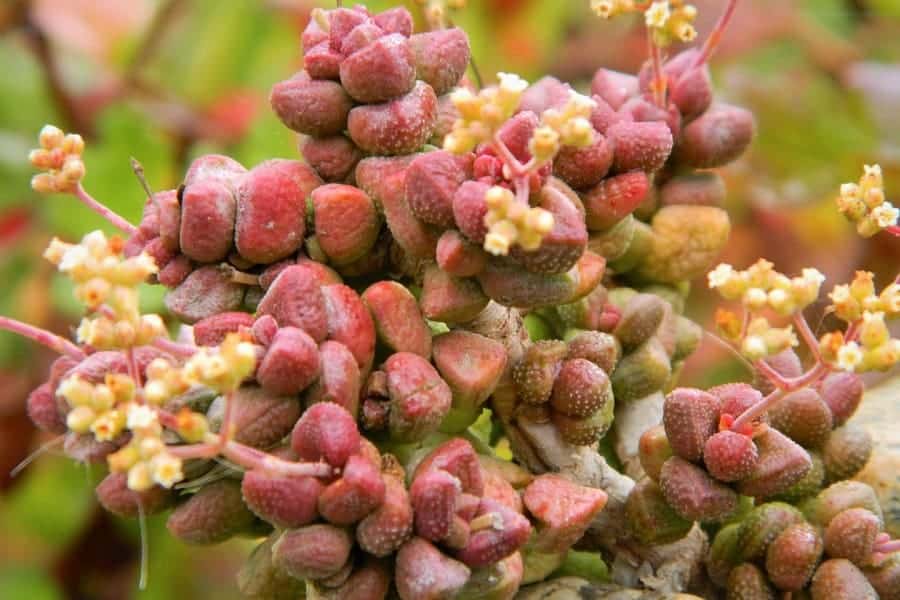
Crassula elegans is a dwarf succulent with a maximum height of 3.2 inches. It has a short stem but grows a wide network of branches, quickly sprawling over its container. The leaves are vivid green and oval in shape, but they have a triangular width.
Crassula exilis
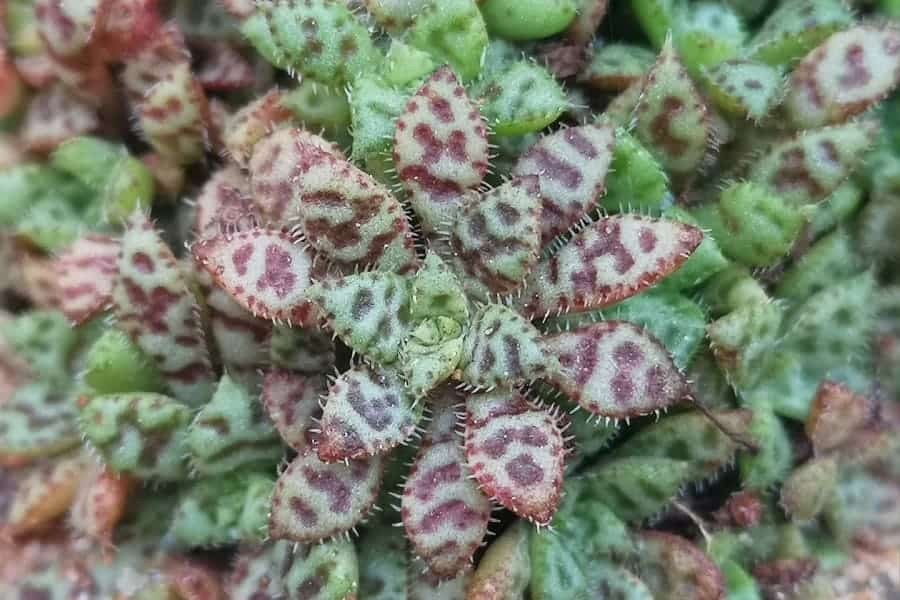
Crassula exilis is a small-sized succulent originating from South Africa. They reach a height of 1.5 inches at the most. The leaves grow in tightly packed rosettes and are about 2 inches long. The leaves are green and speckled with dark green dimples.
Crassula falcata
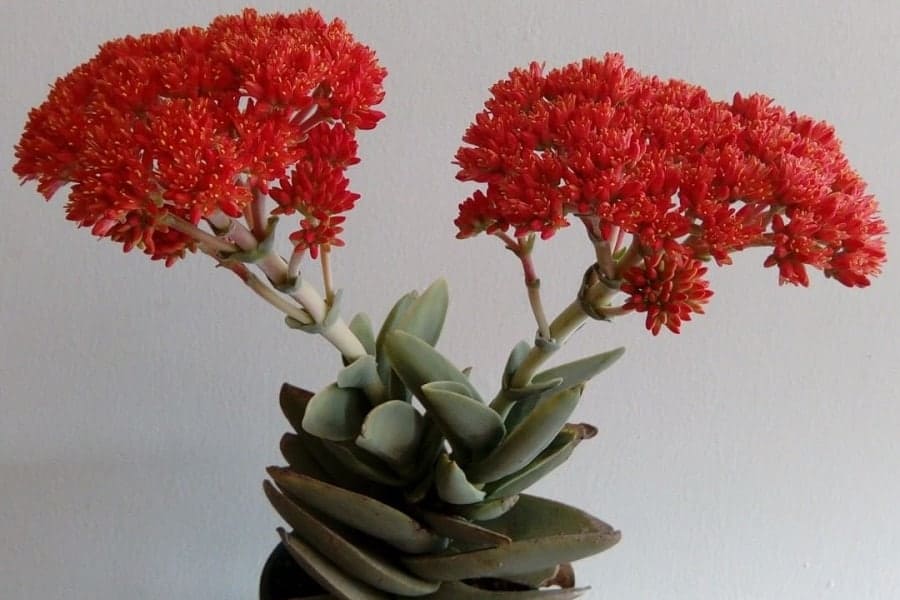
Crassula falcata is a gorgeous succulent with a very vivid, contrasting color scheme. The leaves are dull green and sickle-shaped. They overlap each other on the stems and look like plane propellers, which is why Crassula falcata is also known as an ‘airplane plant’.
Crassula Ivory Pagoda
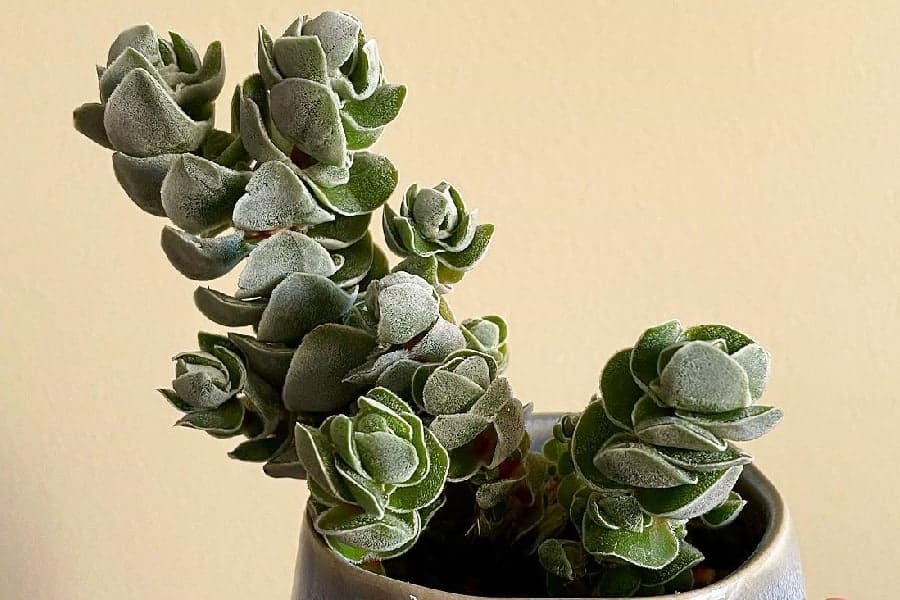
Crassula Ivory Pagoda is a small-sized hybrid succulent. Its name refers to the columnar structure the leaves grow in. Their unique texture makes the leaves appear frosty white and they are closely packed together in an overlapping pattern.
Crassula lactea (Taylor’s Parches)
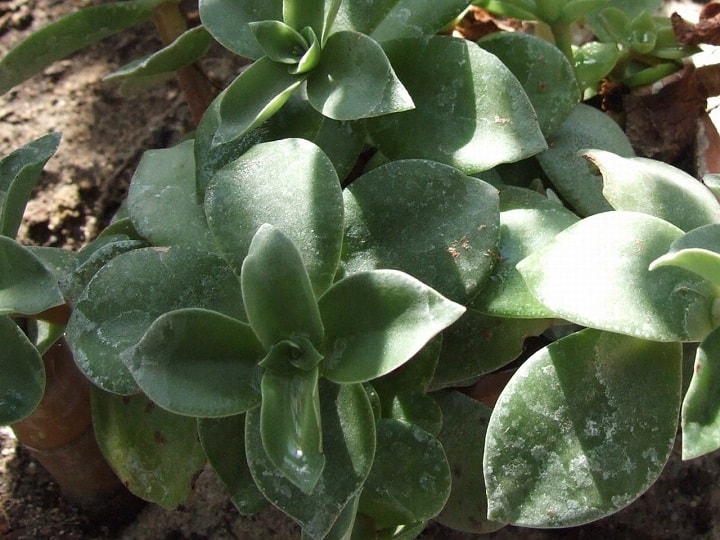
Crassula lactea is one of the easiest thick-leaf species to cultivate. The shrub, which is up to 27 inches high, has spreading, downward-sloping branches. The oval, dark green colored and white spotted leaves reach a length of about 2 inches. In winter, cymes form from relatively large individual flowers.
Crassula mesembryanthemopsis
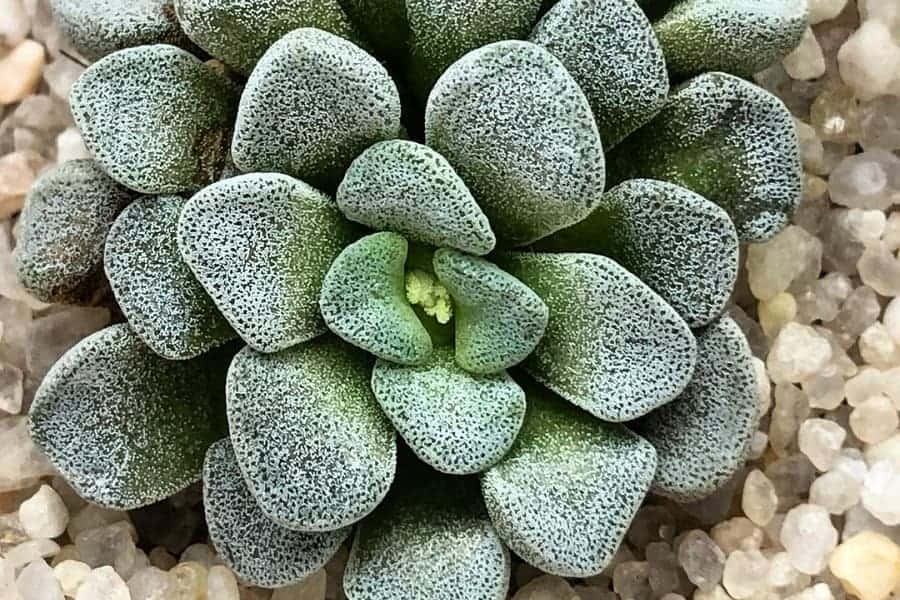
Crassula mesembryanthemopsis is a South African succulent suited to grow in hot climates. The stem of this plant is underground and the leaves are dark green, thick and tubular or shaped like a club.
Crassula ‘Morgan’s Beauty’
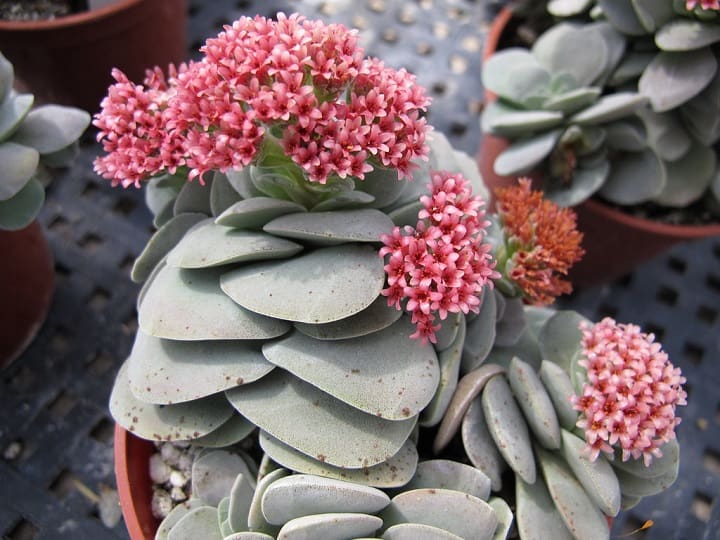
This succulent plant, also called Crassula Morgan’s Pink, is a special type with stunning winter flowers. It grows slowly but produces some of the most beautiful flowers in its group. These flowers look really lovely against the plant’s silvery leaves. During the winter season, it’s important to water this plant sparingly and divide large parts of the plant to avoid rot. Crassula Morgan’s Pink enjoys both sunny and shady spots.
In terms of size, this succulent grows to about 5 inches in height and can spread up to 35 inches wide. It requires a minimum temperature of 50°F to thrive.
Crassula muscosa (Watch Chain)
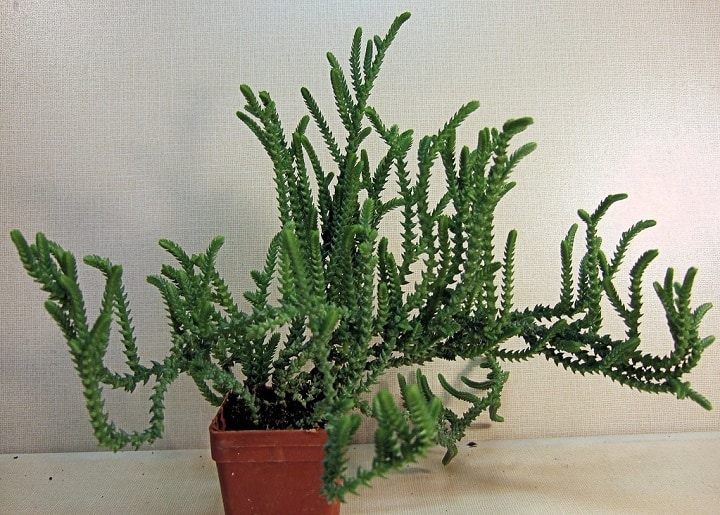
Crassula muscosa, also called Crassula lycopodioides, grows as a small, heavily branching plant. The fleshy, tiny, pointed leaves that are arranged like roof tiles grow out of the slender, upright shoots. The yellow-colored, inconspicuous flowers grow singly or in pairs. This succulent plant only reaches a height of about 10 inches in home culture.
Crassula nudicaulis
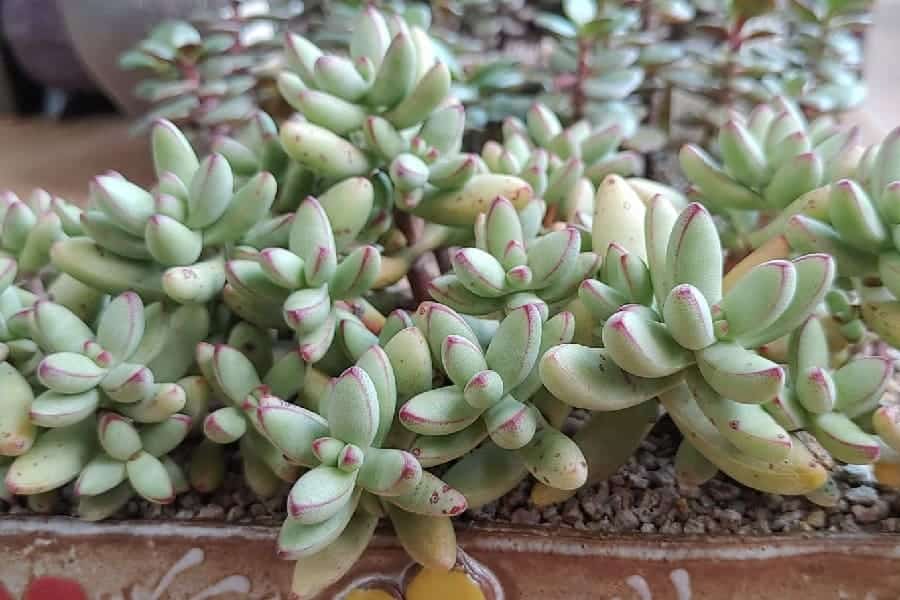
Crassula nudicaulis tends to grow pretty close to the ground and only manages to reach a height of around 5 inches. Native to South Africa, this plant has a thick taproot and thick but flattened leaves that usually grow in rosettes.
The leaves also have small hair and tend to be green and brownish in color. The flowers usually grow in spring and summer and are green, yellow or white in color.
Varieties of Crassula nudicaulis:
Crassula platyphylla (Crassula nudicaulis var. platyphylla)
Crassula obvallata
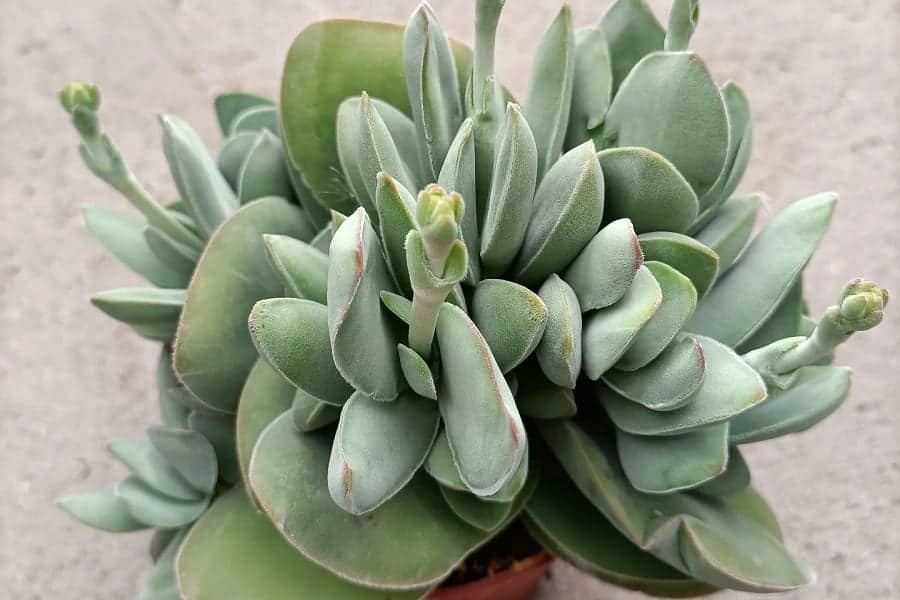
Crassula obvallata mainly grows in South Africa but it is now quite popular as a houseplant worldwide. The leaves of this plant grow in a rosette and tend to be minor, thick, and generally flat throughout the surface. While generally silver-green, the leaves can sometimes develop a reddish or purplish hue towards the edges or even across the surface.
Crassula orbicularis
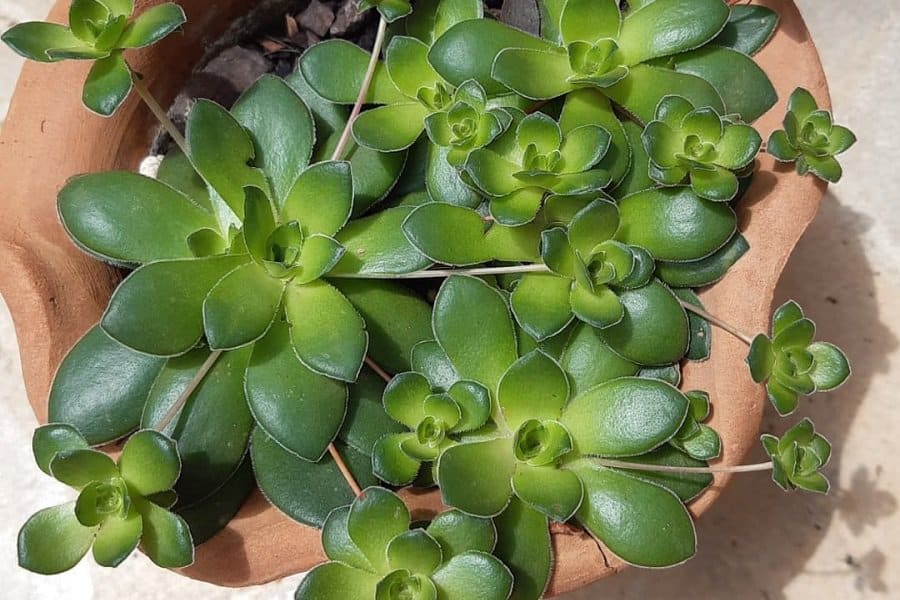
Crassula orbicularis is native to South Africa and is mainly known for its fleshy green leaves that grow on the stems. Multiple leaves usually tend to grow around a single branch, making them appear like a rose.
These leaves are usually around 4 inches long and as they grow, the plant tends to look like a group of clumps. The flowers of this plant are white in color but can also have a bit of pink and yellow.
Crassula ovata (Jade Plant)
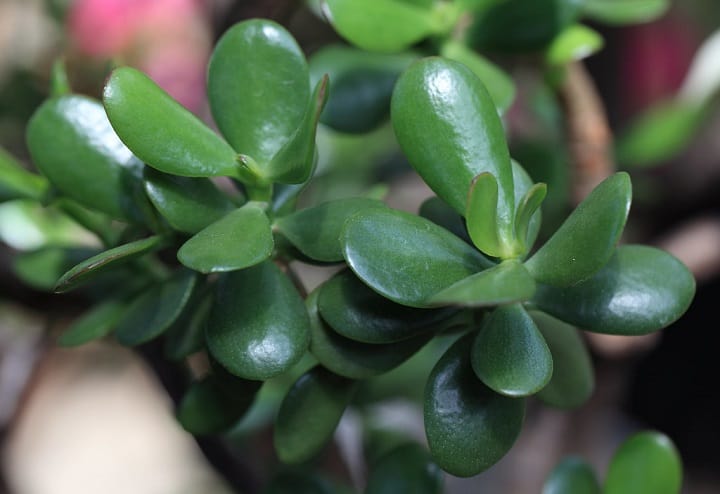
This plant from South Africa should not be confused with another plant called Portulacaria afra, which is also known as the jade plant but has smaller leaves that do not grow opposite each other. There’s also confusion between Crassula ovata and Crassula arborescens.
Crassula ovata is a succulent shrub that grows fairly quickly. It can reach a height of 6.5 feet but usually stays around 24-35 inches tall. The plant has thick, brown branches and broad, shiny leaves that are wedge-shaped and may have a red rim.
This species of plant enjoys being in full sunlight and can be grown in containers. There is a smaller cultivated form called ‘Hobbit’. When this tree-like succulent is well-fed and watered during the summer, it produces clusters of white flowers from late autumn to winter. After trimming and shaping the plant, it’s important to remove old leaves during springtime.
Varieties of Crassula ovata:
Crassula ovata Coral
Crassula Pangolin
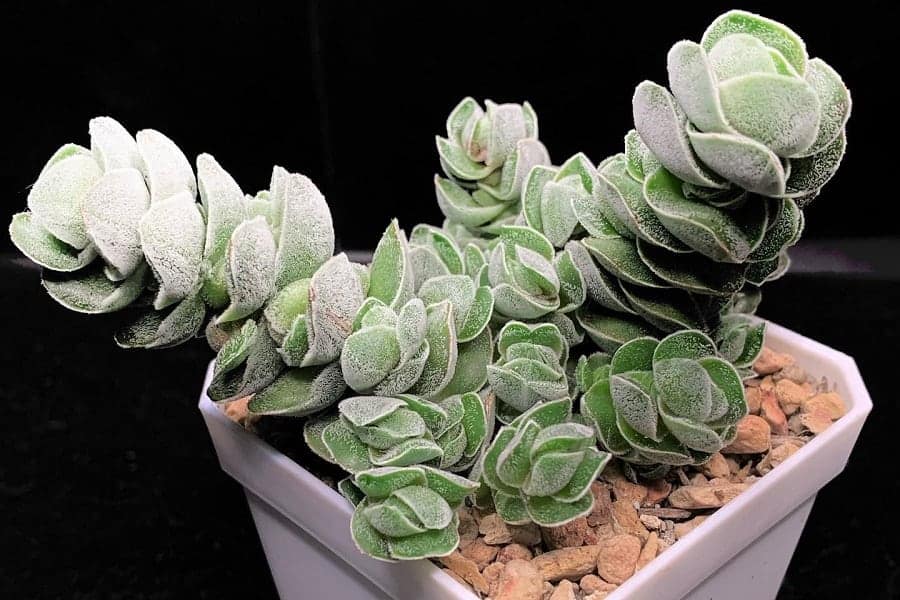
Crassula Pangolin has intersecting or overlapping leaves that go on to form multiple stem-like structures. These then go on to grow to a certain height and continue to mature for several years until they are ready for flowering.
The flowers that bloom at the tips of these leaf structures are quite large and round and white in color. The leaves themselves are gray-green in color.
Crassula perfoliata (Propeller plant)
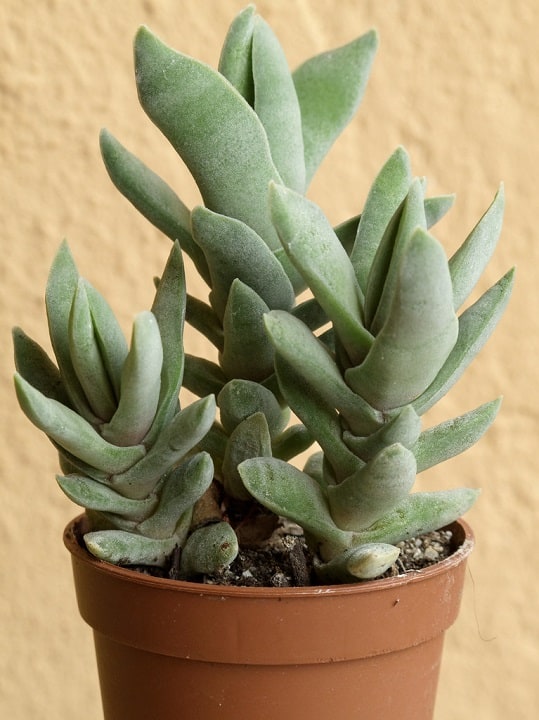
This unique plant species is from southeastern South Africa and has a lot of variation. In fact, some types were once classified as completely different species. The branches of this plant grow straight up from the base and can reach a height of about 3.3 feet. Its long and fleshy leaves are organized in pairs, positioned opposite each other.
The variety called Crassula perfoliata var. perfoliata has green and grooved leaves that are about 4-6 inches long. They hang down and are placed at different heights on the stem. On the other hand, the variety known as Crassula perfoliata var. minor, or also called Crassula falcata, has light gray-green leaves that resemble curved knife blades standing on their cutting edge. The leaves overlap at the base and all grow within the same plane. In the summertime, this plant produces dense clusters of pretty, dark red flowers on the upper ends of its stems.
Crassula picturata
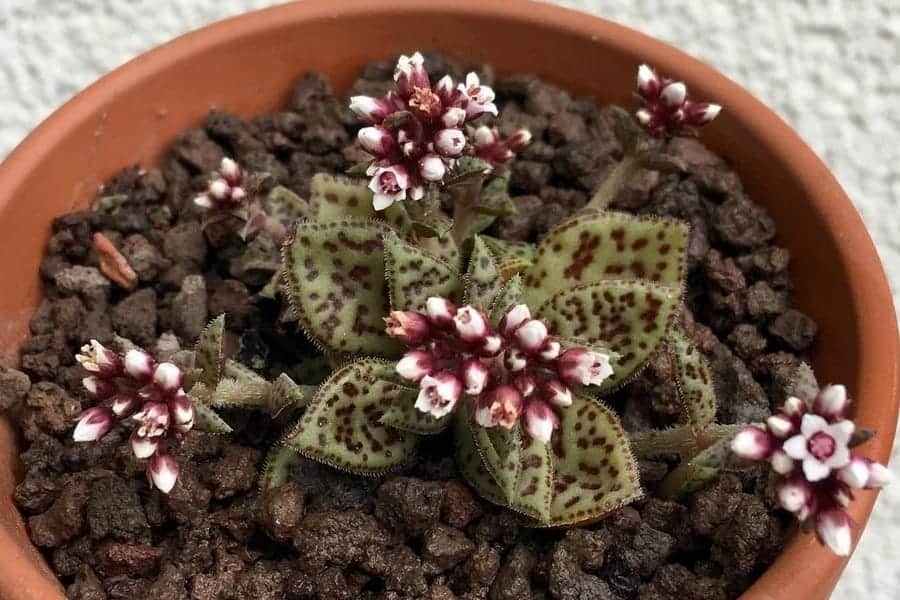
The Crassula picturata species is native to South Africa. It is quite small in size, making it a dwarf succulent. It comprises several stems that branch out into fleshy and triangular leaves that grow in layers like a rosette. The leaves are pale or dark green in color and also have several dark spots on the surface.
The flowers are quite tiny too and are pink or white in color and bloom in the summer and fall months.
Crassula plegmatoides
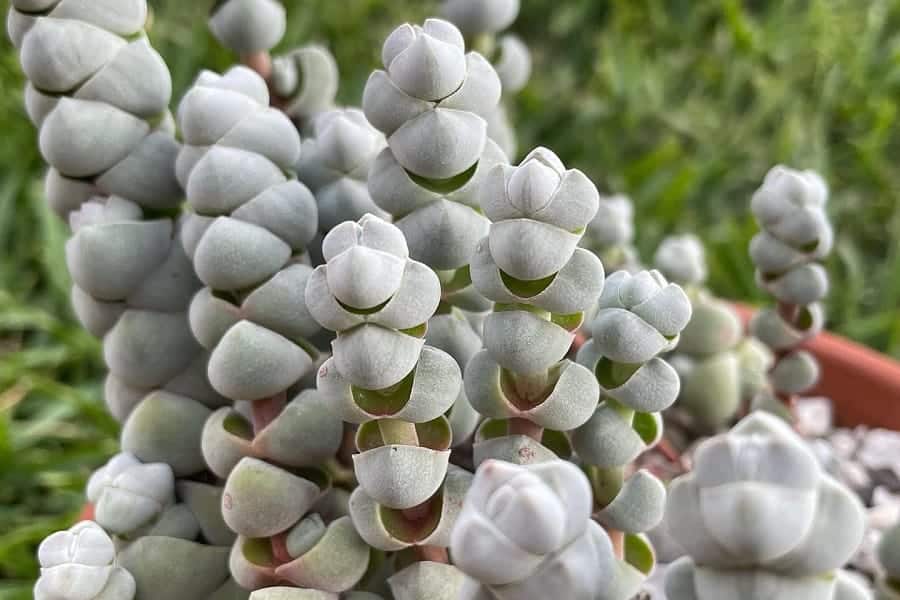
Crassula plegmatoides are shrub-like succulents that tend to grow in columnar structures, not in the form of a stem but because the leaves layer on top of each other to form a dense column. The leaves are slightly rounded, making it easier for them to stack together to form the shape.
This plant has off-white or cream flowers that bloom towards the end of summer and into fall.
Crassula pruinosa
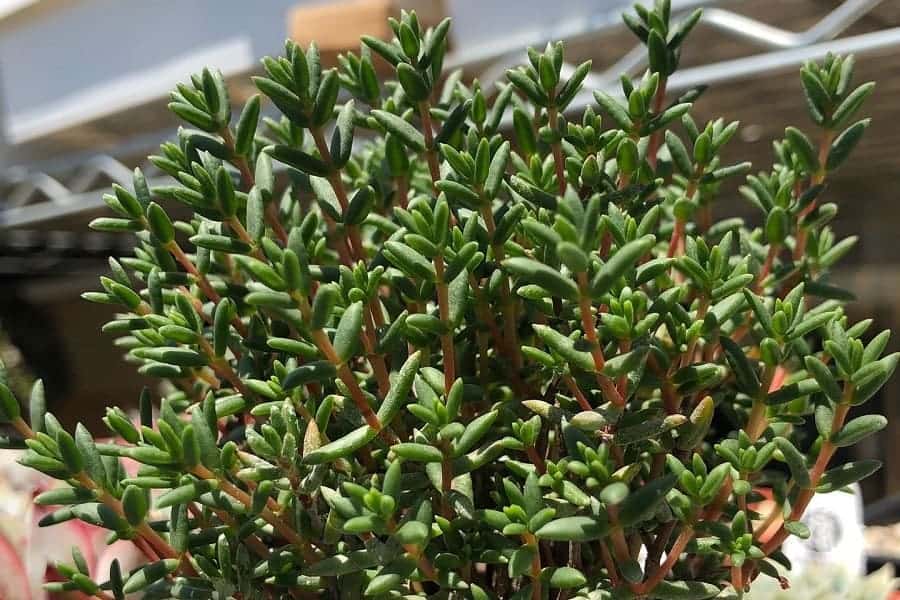
Crassula pruinosa is a species that mainly grows in South Africa. It grows in the form of a shrub with several thin branches resulting in small but fleshy green leaves with plenty of hair on the surface. The shrub remains small in size throughout its lifespan, reaching a height of around 8 inches once it becomes mature.
This plant has white and pink flowers that usually bloom throughout the months of summer.
Crassula pyramidalis
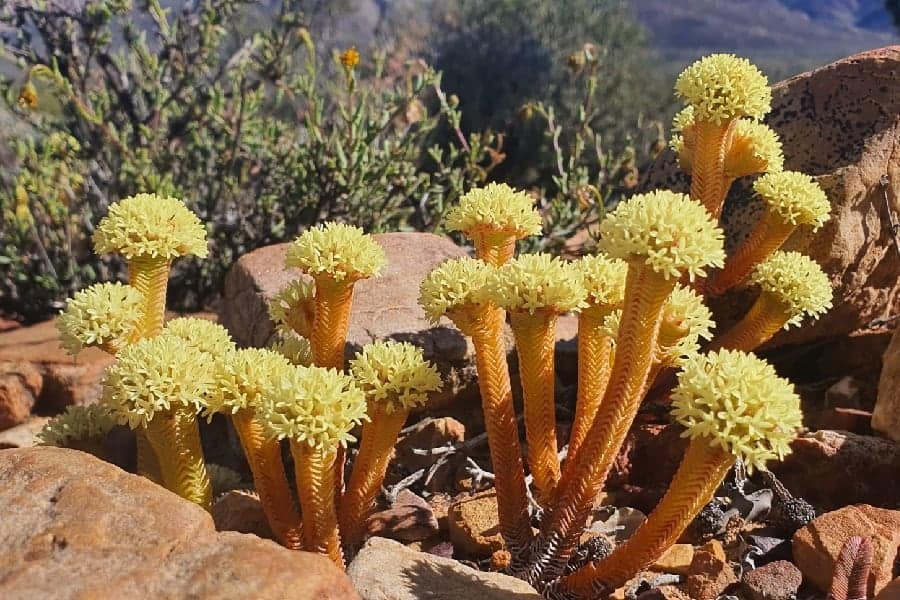
The Crassula pyramidalis species has small and bright green fleshy leaves layered on top of each other to form columns around the stem. This makes for a unique appearance since the stems in this case are barely visible. The tips of these columns often also tend to turn pink due to exposure to the sun.
Additionally, this plant species that is native to South Africa blooms forth flowers that are white and pink in color, although these are not always visible either.
Crassula rupestris (String of Buttons)
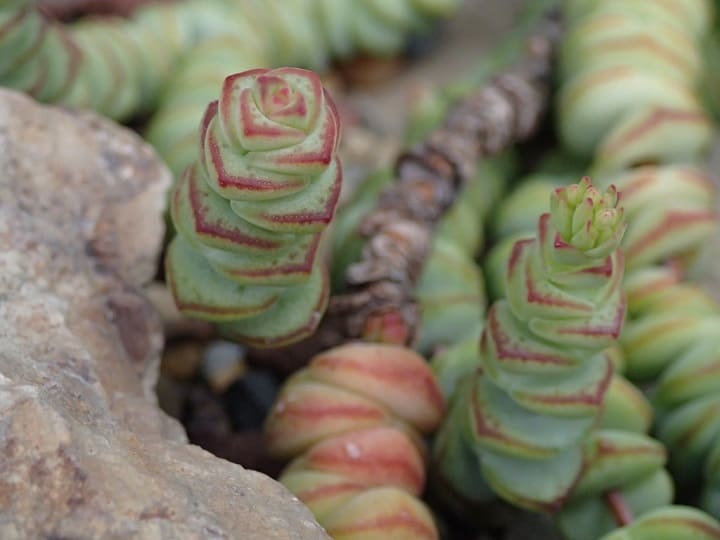
Crassula rupestris is a type of small succulent plant that doesn’t grow very tall. Instead, its long stems lie on the ground. The leaves of this plant are about an inch in size and have a fleshy texture. They are colored in a blue-gray shade and have an egg shape. During the summer season, this plant produces small flowers that are yellow in color. These flowers bunch together in wide clusters called cymes.
Varieties of Crassula rupestris:
Crassula Springtime
Crassula schmidtii (Fairy Tongue)
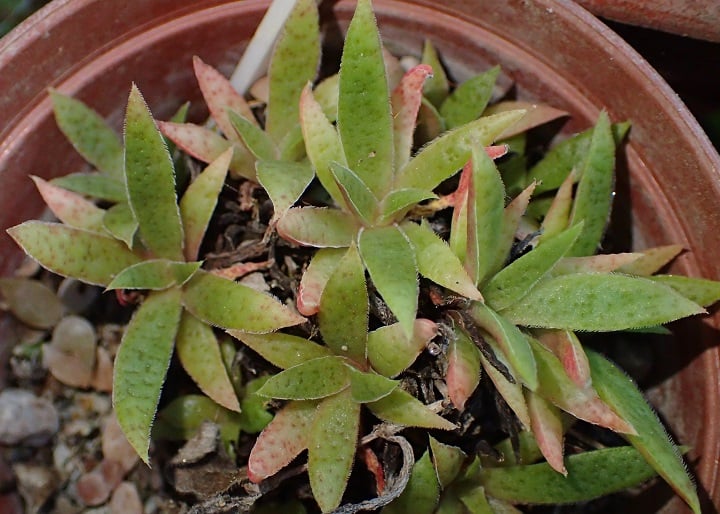
Like other small crassula types, Crassula schmidtii is a perfect choice for a pot plant that blooms during the winter season. It has tiny leaves which are sometimes spotted with red. The flowers of this plant are light pink to red in color. The plant spreads quickly, so it’s important to remove any dead flowers. It prefers to be placed in an area with partial shade and doesn’t like cold and damp conditions.
In terms of size, this plant grows to about 4 inches in height. Its width can spread without limitations, meaning it can grow and extend as much as it wants. It requires a minimum temperature of 41°F to thrive.
Crassula socialis
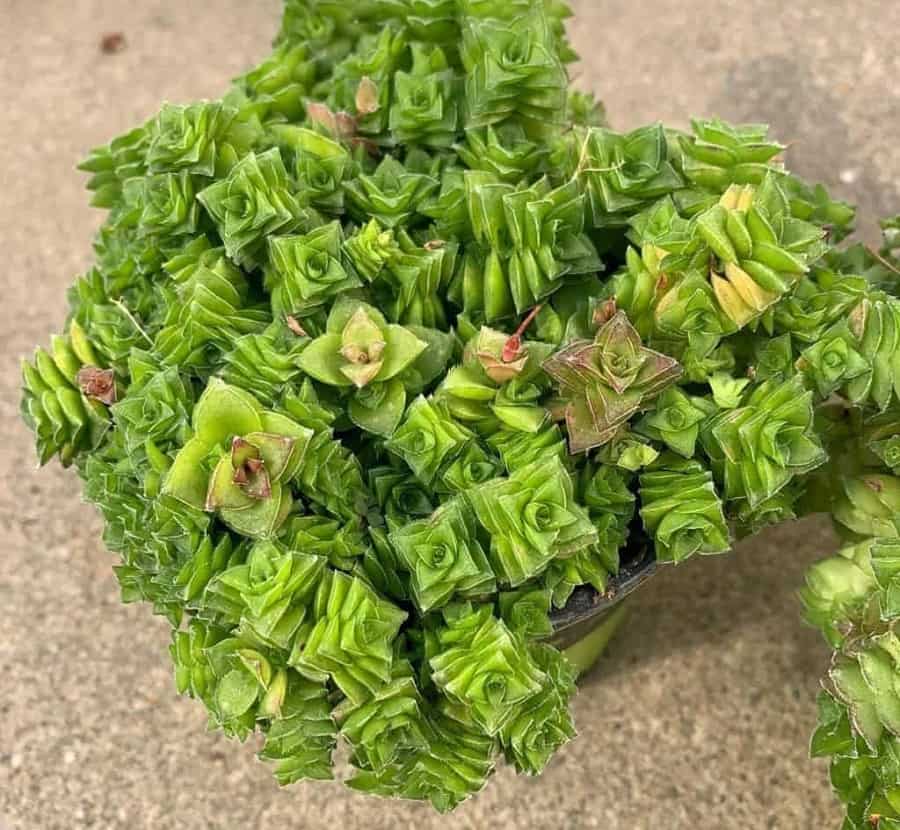
Crassula socialis is a tiny, desert plant that looks like a cushion made up of many small circle-shaped leaf clusters. The leaves are green but have a touch of red on them. When these plants bloom, they can grow up to 2.5 inches tall. The leaf clusters are about an inch wide.
The leaves of Crassula socialis are flat and oval to almost round in shape. They usually point downwards, as if they are drooping. The flowers of this plant are white and shaped like cups, and they usually appear in the spring. The slender stalks that hold the flowers can be up to 2.5 inches long and sometimes have branches.
Crassula streyi (Pondo Cliff Crassula)
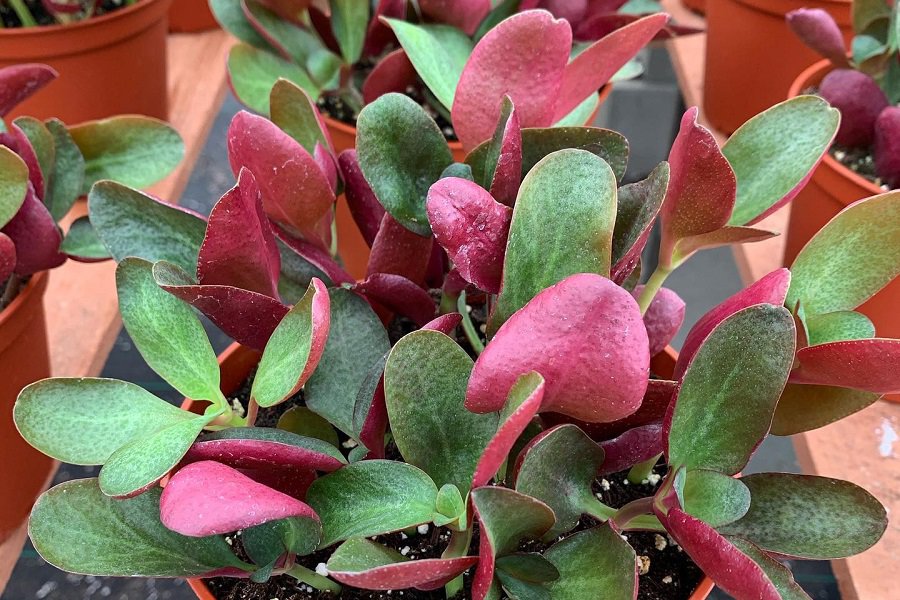
The Crassula streyi is a stunning plant that catches the eye because of its contrasting leaf colors. When it’s in a shady spot, the leaves look shiny and are dark green on top, but underneath, they are a beautiful wine red. However, when exposed to sunlight, the leaves lose their glossiness and become dull. In the fall, this plant produces inflorescences, which are clusters of small white flowers. The shoots of the Crassula streyi spread out on the ground, creating a flat pad-like shape.
In terms of its size, this plant can reach a height of about 12 inches. So when it stands up, it’s as tall as a ruler. But when it spreads out, it can cover quite an area, up to 6.5 feet across. This plant can survive in temperatures as low as 50 degrees Fahrenheit or 10 degrees Celsius, so it needs to be kept in a place that’s at least that warm.
Crassula susannae
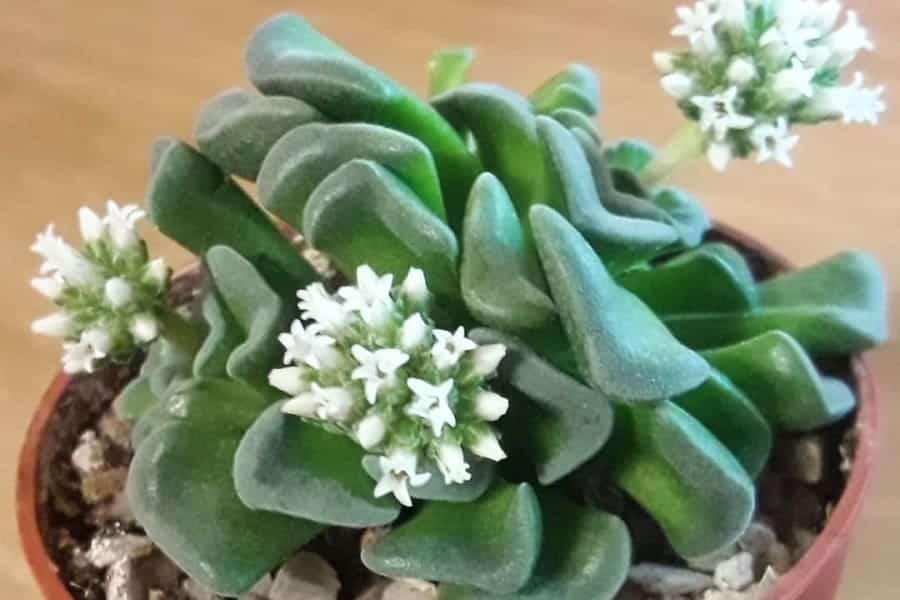
Crassula susannae is one of the small crassula types that are mainly native to Little Namaqualand in South Africa. This plant grows quite slowly and can manage to reach a height of up to 6 inches. It has small but fleshy leaves that grow in the form of small rosettes, with the plant having numerous such rosettes.
The flowers of this plant appear in fall and spring and are usually white in color.
Crassula tecta
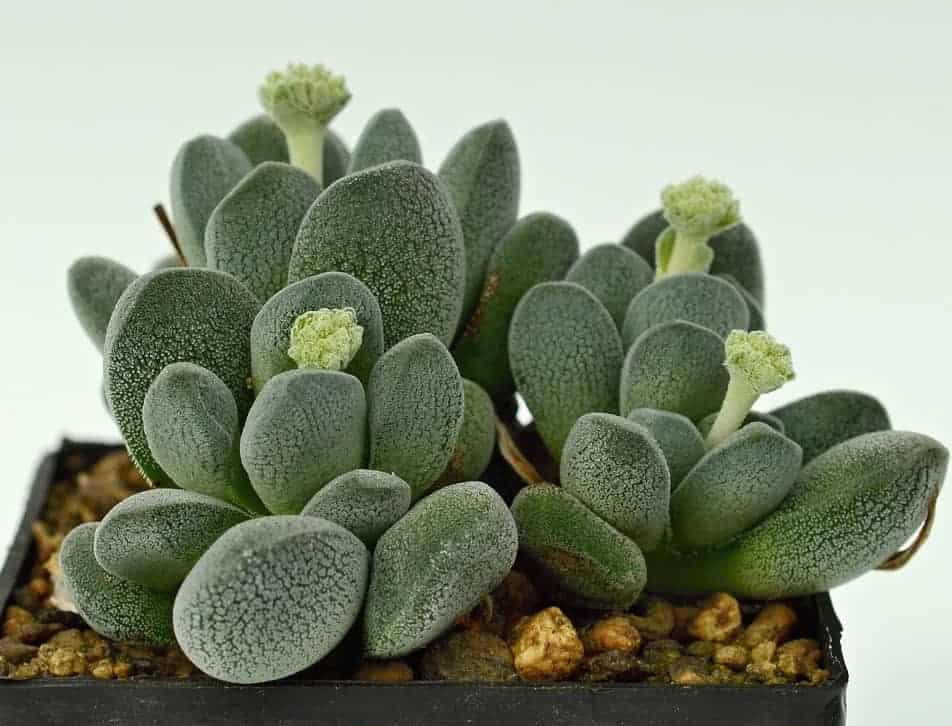
Crassula tecta is also commonly called the Lizard Skin Crassula. This is a small species that is native to Cape Province in South Africa. The plant features a rosette of leaves that are blue-green in color while also being broad and fleshy.
Each leaf additionally has several small white spots or bumps that cover the entire surface. The flowers additionally bloom in the months of spring and are white in color with a bit of yellow.
Crassula tetragona (Miniature Pine Tree)
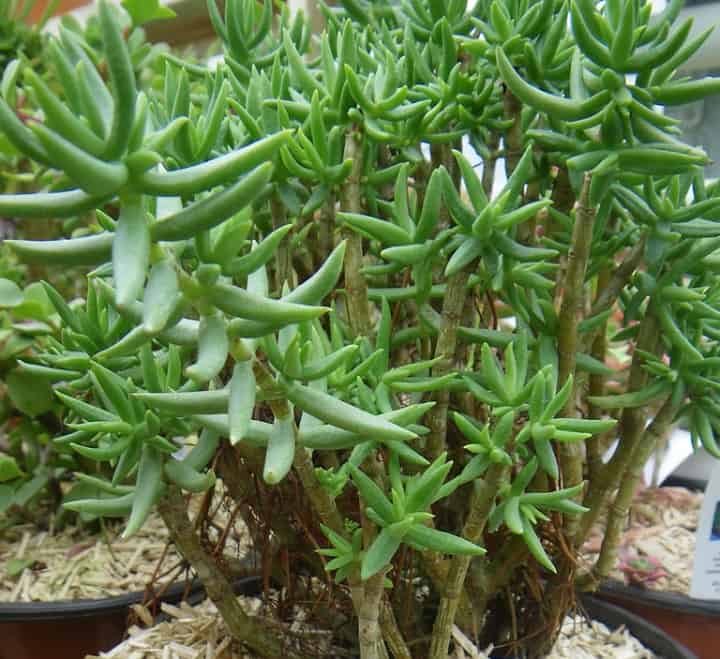
This cool plant from the southeastern coast of South Africa is around 2 feet high. The leaves are about 1 inch long, almost round in shape and curving upwards to a point. They are arranged in four vertical rows. Small, beige-colored flowers appear in bunches in the spring and summer.
In places with a not-too-hot climate, this plant slowly spreads out and colonizes areas of about 30-60 square feet by reproducing with fallen leaves over several years.
When it’s young, this small, upright plant loves sunlight and looks like a miniature conifer with its shiny, needle-like leaves. It’s great for small gardens. In the fall, it produces small white flowers. After the flowers are gone, you can trim it to stop it from spreading too much.
Crassula volkensii
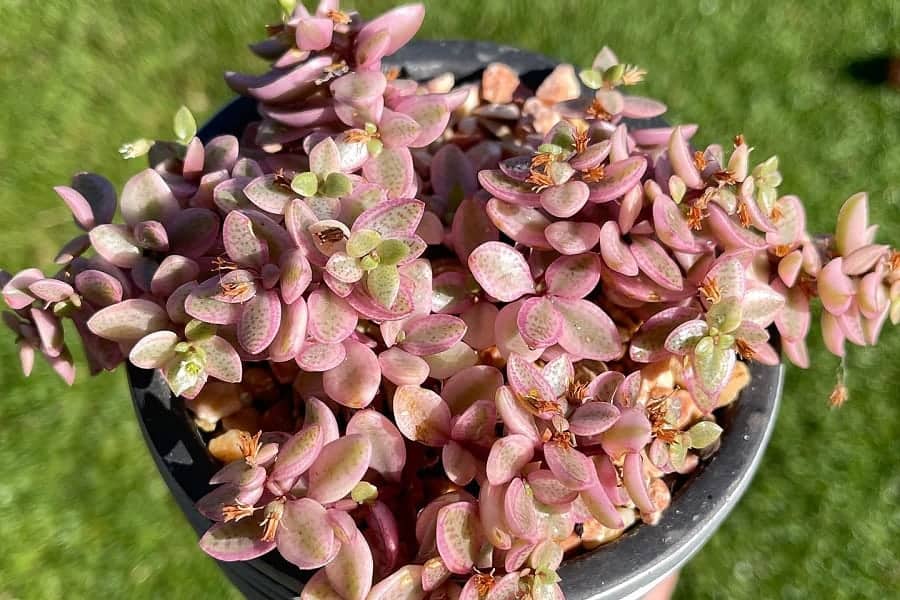
Crassula volkensii is a species that tends to grow as a shrub. This plant is native to Tanzania and Kenya and features several small rosettes of leaves. The leaves are additionally short, triangular and fleshy. They are dark green in color with purple-red spots across the surface and a border in this color too.
The plant can achieve a height of up to 6 inches, thus remaining relatively short but clustered. The flowers are white and pink in color.

